Frank Sturdy Sinnatt | |
|---|---|
 | |
| Born | 4 May 1880 |
| Died | 27 January 1943 |
| Occupation | Engineer |
| Engineering career | |
| Discipline | fuel engineering |
Frank Sturdy Sinnatt CB FRS (4 May 1880 – 27 January 1943) was a British fuel engineer.
Frank Sturdy Sinnatt | |
|---|---|
 | |
| Born | 4 May 1880 |
| Died | 27 January 1943 |
| Occupation | Engineer |
| Engineering career | |
| Discipline | fuel engineering |
Frank Sturdy Sinnatt CB FRS (4 May 1880 – 27 January 1943) was a British fuel engineer.
Sinnatt was born on 4 May 1880 in St. Helier in Jersey, eldest of two brothers and a sister. His father was a journalist, Francis Sinnatt and his mother Sarah Sturdy, from a family of textile manufacturers in Lancashire. The family moved to Manchester when Sinnatt was still a child. There he attended the Central High School and gained a scholarship to enter the Manchester School of Technology in 1897 to study Chemistry. In 1900 he became a demonstrator in Organic Chemistry before being appointed Assistant Lecturer in Applied Chemistry. [1]
Quickly, Sinnatt focussed on the study of coal as a technology. [2] He briefly served with the Special Brigade, in France, in 1915 but returned home injured. [3] By 1918, he set up the Lancashire and Cheshire Coal Research Association, becoming its first director. In 1924, he was appointed Director of Fuel Research at the Department of Scientific and Industrial Research, and went on to be Director in 1931. He supported the project to measure Britain's coal resources (The Coal Survey), becoming its Superintendent in 1924. In addition to his work on establishing the Coal Survey he was still heavily involved with the work of the Fuel Research Station at Greenwich. [2] Around this time, he married his wife, Louise Midgley Badger. [1]
He was made a CB in the 1935 Birthday Honours. [4] He was elected a Foreign Member of the Royal Swedish Academy of Engineering Sciences in 1935 and a Fellow of the Royal Society in 1938. [1] He died of bronchitis in 1943 in Greenwich. [5]
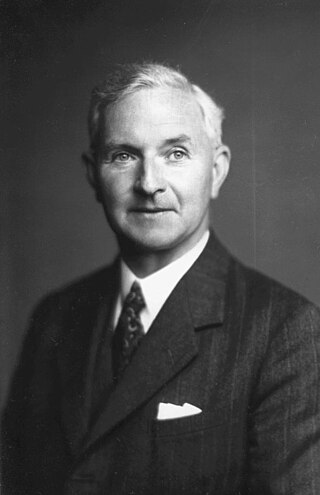
Sir John Edward Lennard-Jones was a British mathematician and professor of theoretical physics at the University of Bristol, and then of theoretical science at the University of Cambridge. He was an important pioneer in the development of modern computational chemistry and theoretical chemistry.
Frederic Stanley Kipping FRS was an English chemist. He undertook much of the pioneering work on silicon polymers and coined the term silicone.

James Young was a Scottish chemist best known for his method of distilling paraffin from coal and oil shales. He is often referred to as Paraffin Young.

Sir William Boyd Dawkins was a British geologist and archaeologist. He was a member of the Geological Survey of Great Britain, Curator of the Manchester Museum and Professor of Geology at Owens College, Manchester. He is noted for his research on fossils and the antiquity of man. He was involved in many projects including a tunnel under the Humber, a Channel Tunnel attempt and the proving of coal under Kent.
Leslie John Comrie FRS was an astronomer and a pioneer in mechanical computation.
Sir Richard Tetley Glazebrook was an English physicist.

Sir Lewis Leigh Fermor, OBE, FRS, was a British chemist and geologist and the first president of the Indian National Science Academy and a director of the Geological Survey of India (1930-1935). His son was the writer and traveller Sir Patrick Leigh Fermor.
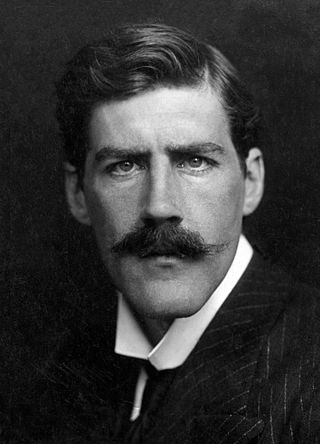
David Alexander Edward Lindsay, 27th Earl of Crawford and 10th Earl of Balcarres,, styled Lord Balcarres or Lord Balniel between 1880 and 1913, was a British Conservative politician and art connoisseur.
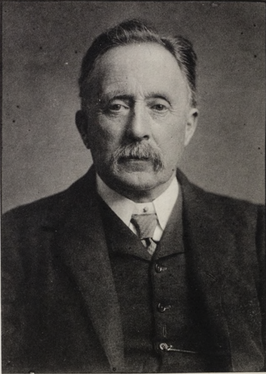
Dr Walcot Gibson FRS FRSE was a British geologist. His main tasks involved mapping the coalfields of Wales and the Midlands.
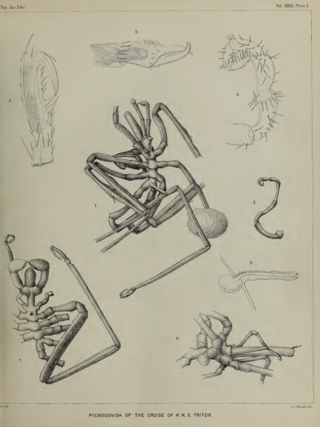
Thomas Henry Tizard was an English oceanographer, hydrographic surveyor, and navigator.
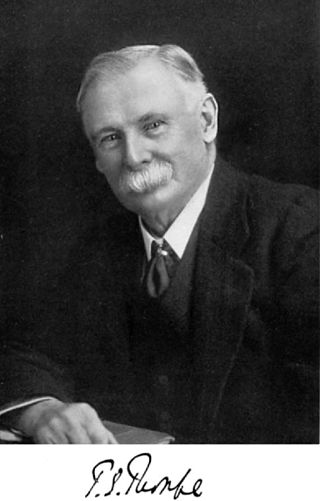
Sir Thomas Edward Thorpe CB, FRS HFRSE LLD was a British chemist. From 1894 to 1909, he was Chief Chemist to the British Government, as Director of the Government Laboratory.

Sir Alfred Daniel Hall,, sometimes known as Sir Daniel Hall was a British agricultural educator and researcher who founded Wye College.
Harold Baily Dixon was a British chemist and amateur footballer who appeared for Oxford University in the 1873 FA Cup Final.
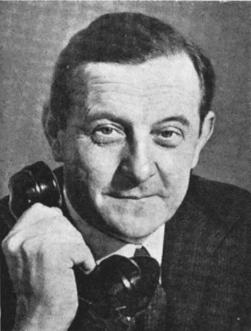
Walter Idris Jones CBE was a Welsh industrial chemist and international rugby union player. He captained the Wales national rugby union team on one occasion in 1925. Jones played his club rugby for Llanelli RFC.
William Arthur Bone, FRS was a British fuel technologist and chemist.
Sir Robert Howson Pickard FRS was a chemist who did pioneering work in stereochemistry and also for the cotton industry in Lancashire. He was also involved in educational administration and was Vice Chancellor of the University of London from 1937-1939. He was Principal of Battersea Polytechnic from 1920 to 1927.

The Department of Chemistry at the University of Manchester is one of the largest departments of Chemistry in the United Kingdom, with over 600 undergraduate and more than 200 postgraduate research students.
Sir William John Pugh was a British geologist who was director of the Geological Survey of Great Britain and of the Museum of Practical Geology, Department of Scientific and Industrial Research.

Adinath Lahiri (1916–1975) was an Indian geochemist and fuel technologist, known for his efforts in developing Central Fuel Research Institute, Dhanbad (CFRI) into one of the premier research institutions in India. He was the director of the National Coal Development Corporation (NCDC) and contributed towards the establishment of the Central Mining Research Station, which was later merged with CFRI to form the present day Central Institute of Mining and Fuel Research). The Government of India awarded him the fourth highest civilian honour of the Padma Shri in 1960 and followed it up with the third highest honour of the Padma Bhushan, in 1969, for his contributions to Science and Technology.

Nigel Shaun Scrutton is a British biochemist and biotechnology innovator known for his work on enzyme catalysis, biophysics and synthetic biology. He is Director of the UK Future Biomanufacturing Research Hub, Director of the Fine and Speciality Chemicals Synthetic Biology Research Centre (SYNBIOCHEM), and Co-founder, Director and Chief Scientific Officer of the 'fuels-from-biology' company C3 Biotechnologies Ltd. He is Professor of Enzymology and Biophysical Chemistry in the Department of Chemistry at the University of Manchester. He is former Director of the Manchester Institute of Biotechnology (MIB).